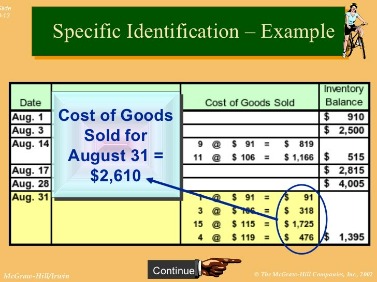
Similarly, the IRS Form W-2 is entitled Wage and Tax Statement. The company makes payment of January salary in February, however, we need to record the expense in January to prepare the financial statement. Most of the company pays employees at the end of the month or even the beginning of next month.
Merit Pay for Family Member Employees – The Foreign Service Journal
Merit Pay for Family Member Employees.
Posted: Sun, 03 Sep 2023 02:07:49 GMT [source]
If this is the case, the cash payment for the salaries will not flow out from the company yet at the end of the month of work. However, the company still needs to make the journal entry for the salaries expense in the form of accrued expense if it follows the accrual basis of accounting. In business, the company usually makes the salary payment to its employees at the end of the month in order to pay for the works that the employees have done.
Journal Entry for Salary Expense
Typically, these taxes are deposited on a quarterly basis. Since you haven’t run payroll yet, the $1,923 of gross wages represents the money you owe. We’ll balance that by adding items to the credit column (i.e., your liabilities). So now that you understand this concept–let’s apply it to a payroll journal entry.
A company’s wage expense is the total amount of money that it pays to its employees in a given period. Your journal entry will be made up of both debits and credits, and the debits and credits must always be equal to keep the books in balance. Gift cards have become an important topic for managers of any company. Understanding who buys gift cards, why, and when can be important in business planning. Company EFG usually pays the employee’s current month salary in the next month.
Add state income taxes
And since you paid her, you no longer owe her net wages, so you also decrease your payroll payable liability account by $1,545.13. You decrease your cash account by $1,000 since you spent that money. You also decrease your liability account (also known as a payable account) by $1,000 since you don’t owe that money anymore.
- If the payroll chart of accounts were any bigger, King Kong would climb up it to swat at planes.
- First, we need to understand when shall a GL account will be on the debit side or credit side of the journal entry.
- During the month, the company has paid wages of $ 35,000 to all employees.
- It’s the first entry you record to show a transaction has occurred.
- Expenses are costs your business incurs during operation.
The following entry will record the issuance of those payroll checks. On payday, December 29, the checks will be distributed to the hourly-paid employees. On payday, December 31, nonfinancial assets the checks will be distributed to the salaried employees. This journal entry increases both total expense and total liabilities of the company XYZ by $30,000 as of December 31.
Step 4: Send direct deposit payments
Let’s look at the journal entries for Printing Plus and post each of those entries to their respective T-accounts. In the last column of the Cash ledger account is the running balance. This shows where the account stands after each transaction, as well as the final balance in the account. How do we know on which side, debit or credit, to input each of these balances?
For example, there may be deductions for 401(k) pension plans, health insurance, life insurance, vision insurance, and for the repayment of advances. As per the terms of the partnership deed, they are allowed a monthly salary of 25,000 each. Show related journal entries to be posted in the books of AB Ltd. Step 2 – Transferring salary expense into income statement (profit and loss account).
Types of payroll accounting entries
Well, recording a payroll journal entry is kind of like that. In this journal entry, the cash outflow is only $40,000 even though the salary expense is $45,000 in November. This is due to the company has already paid the $5,000 salary in advance on November 05, 2020. In the journal entry, Utility Expense has a debit balance of $300. This is posted to the Utility Expense T-account on the debit side. You will notice that the transactions from January 3 and January 9 are listed already in this T-account.
- We’ll assume that the distributor’s accounting month and accounting year both end on Saturday, December 31.
- In this journal entry, the cash outflow is only $40,000 even though the salary expense is $45,000 in November.
- Here’s an example of entering third-party paychecks issued on September 1 for two employees in California.
- Since this figure is on the credit side, this $300 is subtracted from the previous balance of $24,000 to get a new balance of $23,700.
In general, the total salary that the company paid to employees is mostly fixed, it only a small change due to new recruit or staff resign. Once the cash has been transferred, it’s time to upload the ACH file to the payroll account to send out direct deposit payments. In this entry, we will clear out the accrued wages and show the reduction in cash. And in payroll accounting, you have several different journal entries to make, first to accrue liabilities, and then to make payments.
The GL Accounts involved here are Salary Expenditure and Salary Payable Liability. First, we need to understand when shall a GL account will be on the debit side or credit side of the journal entry. On payday, January 5, the checks will be distributed to the hourly-paid employees.
Payroll journal entries should be added to your general ledger each time you process payroll. If you handle your own bookkeeping, it’s important to understand how to record a payroll entry to track this major expense. When we introduced debits and credits, you learned about the usefulness of T-accounts as a graphic representation of any account in the general ledger. But before transactions are posted to the T-accounts, they are first recorded using special forms known as journals.



